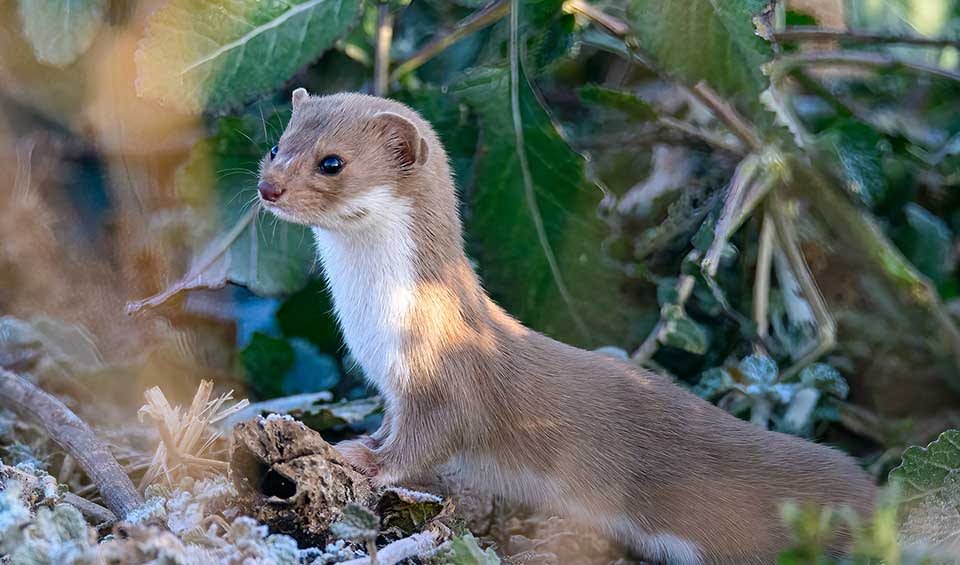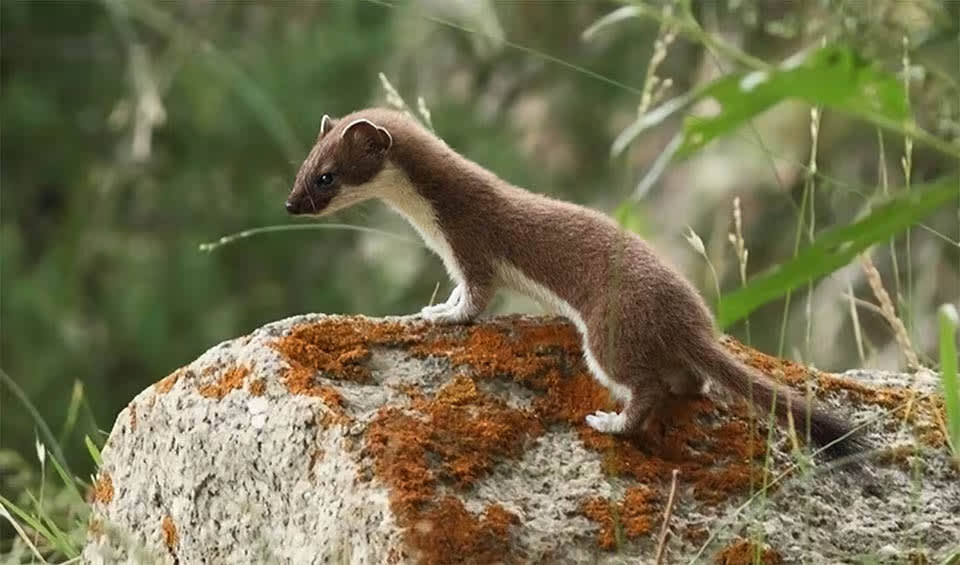Mustela – Weasels
In Greek culture, Mustela is a sign of bad luck as it was thought to be an unhappy bride
This genus represents some of the world’s most adaptable and widespread small carnivores. Known for their slender, elongated bodies and short legs, Mustela species are equipped with physical traits that allow them to be agile and efficient predators, capable of navigating through a variety of habitats and pursuing prey into confined spaces such as burrows and crevices.
Members of the Mustela genus, including weasels, ferrets, stoats (or ermines), and minks, are characterized by their flexible spines and muscular bodies, which facilitate their movement through tight spaces in pursuit of prey. Their long bodies and short limbs are adaptations for hunting in burrows and contribute to their streamlined shape, aiding in swift movement both above ground and in water, in the case of certain species like the mink.
These animals are primarily carnivorous, with diets predominantly consisting of small mammals such as rodents, which makes them beneficial for controlling pest populations. However, their hunting behavior can sometimes bring them into conflict with humans, particularly when they prey on poultry and rabbits in agricultural settings. Despite this, the ecological role of Mustela species in maintaining balanced ecosystems by controlling rodent populations cannot be overstated.
The range of the Mustela genus is extensive, covering various regions across North America, South America, Europe, Asia, and parts of North Africa. This wide distribution is a testament to the adaptability of these animals to diverse environmental conditions, from dense forests and wetlands to grasslands and arid regions. Their ability to thrive in such varied habitats is indicative of their versatile hunting skills and dietary flexibility.
Species in this genus
European mink
Their webbed feet act like tiny paddles, propelling them through the water with surprising speed and agility
Black-footed ferret
Often seen engaging in antics that include hopping sideways and backwards, a behavior known as the “ferret dance”
Mountain weasel
A lightning-fast hunter with a personality far larger than its size
European polecat
Historically, polecats suffered from heavy persecution in Europe, being hunted for their fur and killed
Ferret
Playful, curious creatures with a long history of domestication
Least weasel
The smallest carnivorous predator in the world and so have limited fat stores and need to eat more than 50% of the body weight
Long-tailed weasel
Uses a hunting technique known as the Weasel War Dance that involves a series of frenetic turns, manic twists, and jumps to confuse the prey
Steppe polecat
Widely distributed in Europe and Asia and tolerant to habitat modification
Stoat
A small, fierce predator known for its agility, hunting skills, and color-changing fur
Yellow-bellied weasel
Admired for its ability to outwit larger animals
Domestic ferret
Domesticated from the European polecat, once bred for hunting, now as a pet












